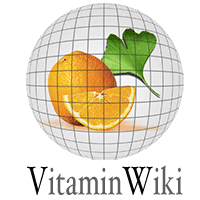Steuert Immunüberreaktionen entgegen
Bildung immunmmodulierender Botenstoffe: Die Gamma-Linolensäure (GLA) gehört der Gruppe der mehrfach ungesättigten Omega-6-Fettsäuren an und ist Ausgangsstoff zur Bildung hormonähnlicher Reglerstoffe. Diese Botenstoffe, genannt Eicosanoide, und insbesondere die Prostaglandine unter ihnen, erfüllen zahlreiche biologische Funktionen und regulierende Aktivitäten in den verschiedenen Steuersystemen des menschlichen Körpers. Die Gamma-Linolensäure sorgt dabei für ein dynamisches Gleichgewicht bei der Synthese unterschiedlicher Prostaglandine, wie PGE1 und PGE2. In Form von Schwarzkümmel- oder Nachtkerzenöl wird die Gamma-Linolensäure innerlich oder äußerlich zur Regulierung allergischer und entzündlicher Prozesse sowie bei der großen Gruppe der Autoimmunerkrankungen eingesetzt. Von Autoimmunerkrankungen spricht man, wenn das Immunsystem gegen das eigene Gewebe eine Immunantwort startet, wie es bei Neurodermitis, Psoriasis (Schuppenflechte), Multiple Sklerose, Rheumatischer Arthritis oder entzündlichen Darmerkrankungen wie Morbus Crohn der Fall ist.
Weitere wissenschaftliche Veröffentlichungen: 1. Furse R. et al.: Gammalinolenic acid, an unsaturated fatty acid with anti-inflammatory properties, blocks amplification of IL-1 beta production by human monocytes. J Immunol. 1;167(1):490-496 (2001). 2. Goyal A.: A randomized multicenter study of gamolenic acid (Efamast) with and without antioxidant vitamins and minerals in the management of mastalgia. Breast J11(1):41-47 (2005). 3. Jamal G. et al.: Gamma-linolenic acid in diabetic neuropathy. Lancet 5-10-6;1(8489):1098 (1986). 4. Middleton S. et al.: A double-blind, randomized, placebo-controlled trial of essential fatty acid supplementation in the maintenance of remission of ulcerative colitis. Aliment Pharmacol Ther ;16(6):1131-1135 (2002). 5. Miles E. et al.: The influence of different combinations of gamma-linolenic acid, stearidonic acid and EPA on immune function in healthy young male subjects. Br J Nutr 91(6):893-903 (2004). 6. Takwale A. et al.: Efficacy and tolerability of borage oil in adults and children with atopic eczema: randomised, double blind, placebo controlled, parallel group trial. BMJ 327(7428):1385 (2003). 7. Usami M. et al: Effect of gamma-linolenic acid or docosahexaenoic acid on tight junction permeability in intestinal monolayer cells and their mechanism by protein kinase C activation and/or eicosanoid formation. Nutrition 19(2):150-156 (2003). 8. van Gool C. et al.: Gamma-linolenic acid supplementation for prophylaxis of atopic dermatitis–a randomized controlled trial in infants at high familial risk. Am J Clin Nutr 77(4):943-951 (2003).

